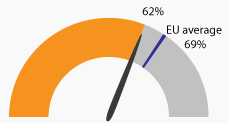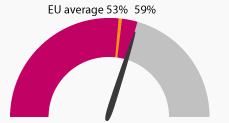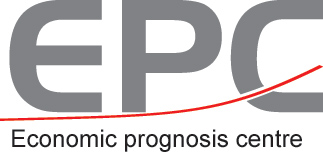Developments in the Latvian economy in 2023 were determined by the consequences of the COVID-19 pandemic and Russia’s war against Ukraine (high energy and food prices, high inflation, reduced consumption, and the high interest rate policy of the European Central Bank), as well as the slower growth of global economic-development engines such as China and Germany.
On the political scene, Prime Minister Krišjānis Kariņš resigned in August, and on 15 September 2023, the parliament approved a new government, led by Evika Siliņa. According to experts, the first 100 days in office of the new government has been a success both internally and internationally.
According to the Central Statistical Bureau of Latvia (CSP), compared with the same period of the previous year, gross domestic product (GDP) declined by 0.4% in the first quarter of 2023 and by 0.8% in the second quarter of 2023 (both seasonally adjusted) and 0.7% (not seasonally adjusted) in the third quarter of 2023. Overall, GDP grew by 3.4% year on year compared with 2022. According to the CSP, consumer prices (inflation) fell from 21.5% in January 2023 to 1% in November 2023 compared with the same period of the previous year. In 2023, the employment rate was over 80% among people aged between 25 and 54 years and 72% among people aged between 15 and 64 years.
The Ministry of Finance assessed that annual inflation in 2023 was 8.9%. A significant factor influencing inflation in 2022 and in early 2023 was a surge in the price of housing-related energy sources such as electricity, gas, solid fuel and heating. In 2022, the government introduced support measures to compensate for the rapid increase in energy prices, which continued to 30 April 2023, partially compensating households’ energy payments and maintaining their purchasing power. At the end of 2023, energy prices fell sharply.
In December 2023, the Bank of Latvia published its latest macroeconomic forecast. The bank predicts low annual inflation in the coming three years (2% in 2024, 2.3% in 2025 and 1.8% in 2026) and moderately weak growth of 2% for the Latvian economy. It projects low unemployment rates, falling to 6.3% in 2024, 6.2% in 2025 and 6.1% in 2026, while nominal wages will grow by 8%, 7.9% and 7.6%, respectively, over the three years.
When the national statutory minimum wage was set in 2022 (for 2023 and 2024), inflation was not considered. The only sector in Latvia with a collectively agreed minimum wage is the construction sector. On 22 September 2023, the sector’s social partners agreed to raise the minimum wage to €930 after difficult negotiations that took account of the impact of inflation, among other things.
No changes were introduced regarding industrial relations and social dialogue. The social partners were prominent mainly in connection with the planning and introduction of an additional tax for banks, pay in the education and health care sectors, and developing tax policy guidelines for 2024–2027. They continued serving their members in relation to information sharing and training, and implementation of projects that were started in previous years.
On 31 August 2023, the chairman of the Free Trade Union Confederation of Latvia (LBAS), Egils Baldzens, highlighted the areas LBAS was focusing on and its expectations of politicians, including: increasing average wages; competitiveness among the Baltic states; tax policy; relations between employers and employees; the need to rapidly raise the non-taxable minimum; fulfilment of politicians’ promises to employees of all sectors and fulfilment of strike demands; problems in the field of transport; inflation compensation; and insufficient restrictions on the shadow economy. The social partners will take part in developments regarding the government’s policy priorities, which as of now have not been not clearly identified.





